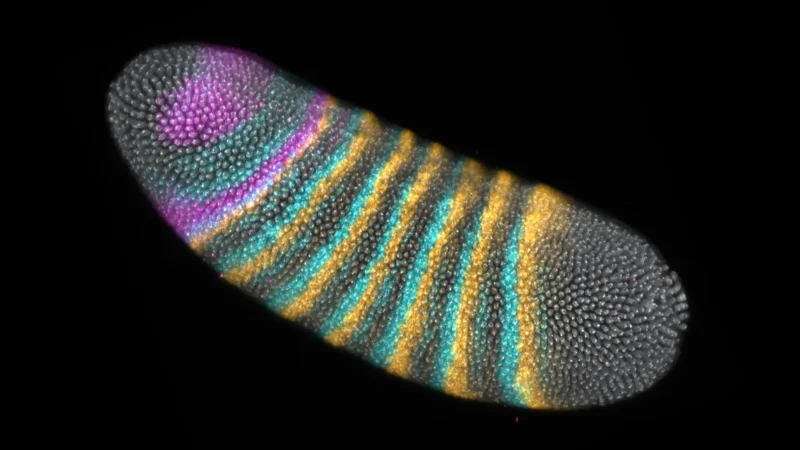Fast Facts
-
Cephalic Furrow’s Role: The cephalic furrow in Drosophila melanogaster stabilizes embryonic tissues during development, highlighting a critical mechanical function despite lacking clear developmental outcomes.
-
Timing and Position Matter: Research integrating experiments and simulations reveals that the formation timing and position of the cephalic furrow are essential for its effectiveness in preventing mechanical instabilities during embryonic gastrulation.
-
Evolutionary Implications: Increased mechanical stress during tissue movements may have driven the evolution of the cephalic furrow, illustrating how mechanical forces can promote developmental innovations in response to physical challenges.
-
New Insights into Mechanisms: Complementary studies identify dual mechanisms (cephalic furrow formation or out-of-plane cell division) that flies use to mitigate mechanical stresses during development, reinforcing the importance of mechanical dynamics in embryogenesis.
Small Fold, Big Impact
A tiny tissue fold known as the cephalic furrow plays a significant role in the development of fruit flies, specifically Drosophila melanogaster. This fold forms between the head and trunk, stabilizing embryonic tissues as they develop. Researchers demonstrated that the timing and position of this fold are crucial, acting as a buffer against mechanical instabilities. As tissues push and pull on each other during development, the cephalic furrow absorbs stress, preventing potential disruptions in formation. This discovery sheds light on how even small physical features can have profound implications for evolutionary biology.
Mechanical Forces Drive Evolution
The formation of the cephalic furrow may represent an evolutionary response to mechanical stress encountered during embryonic development. This insight opens a new avenue for understanding how physical forces shape anatomy and contribute to the evolution of new features. As researchers continue to explore this relationship, they uncover a deeper connection between mechanics and biological innovation. The findings reinforce the idea that evolution often adapts in response to challenges, showcasing nature’s remarkable ability to find solutions. Understanding these dynamics could transform our perspectives on evolutionary development, linking tiny structures to grand biological narratives.
Discover More Technology Insights
Explore the future of technology with our detailed insights on Artificial Intelligence.
Discover archived knowledge and digital history on the Internet Archive.
TechV1

